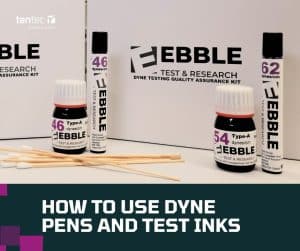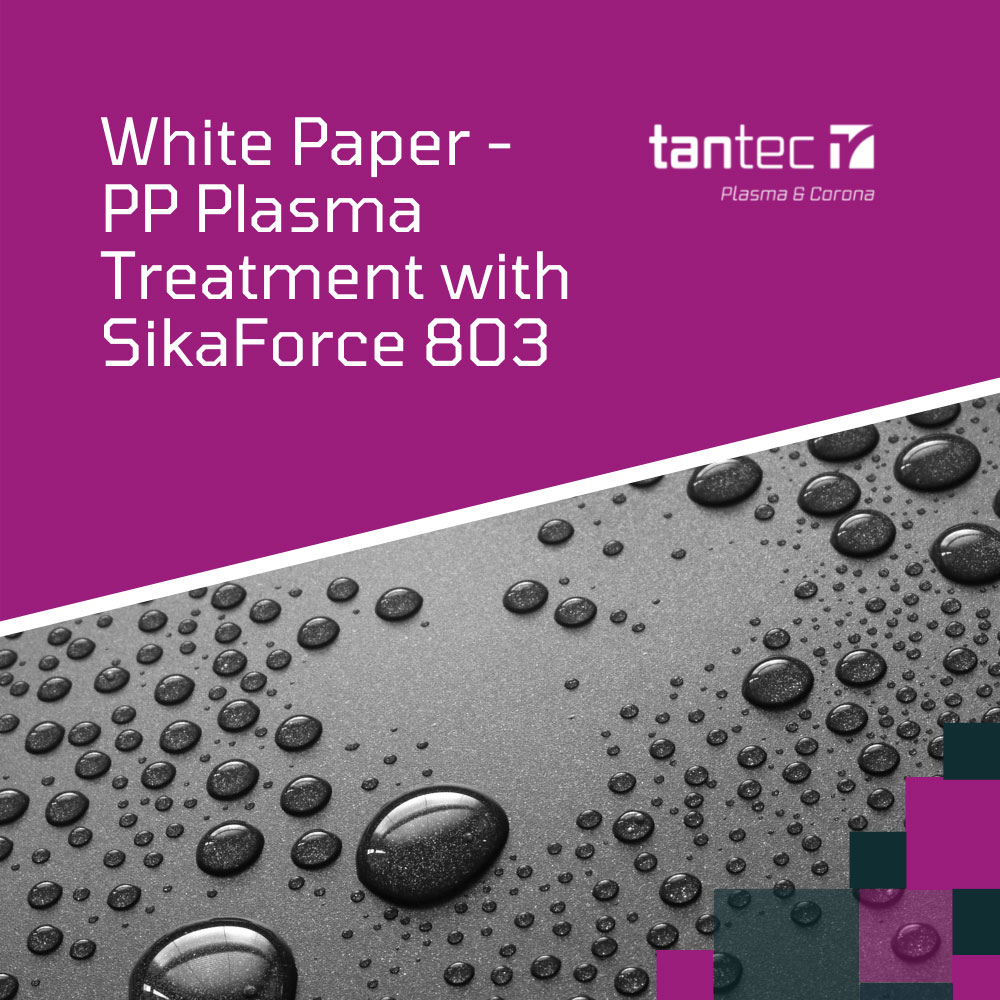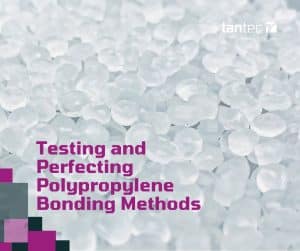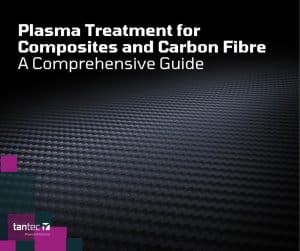
How to use Dyne Pens and Test Inks
Read this to find out the official way to get

Tantec UK’s experts recently undertook an experiment to achieve Polypropylene (PP) bonding using Polyurethane Adhesive SikaForce 803 with different atmospheric plasma treatment settings. The goal of this experiment is to determine the usefulness of plasma treatment on polypropylene and the compatibility with SikaForce 803 Polyurethane adhesive.
Bonding polypropylene using a surface treatment, often plasma or corona treatment, is common through various industries due to the low bonding performance of polypropylene. Although difficult to bond, it’s chemical resistance, temperature use properties and cost to manufacture make it an exceptional plastic for many applications. In applications where bonding is critical, such as safety critical print on a medical device or product quality that needs to last product lifetime such as leather bonding to automotive trim, plasma treatment is often used to improve adhesion and longevity, as well as providing a consistent bonding surface to give confidence in the products lifetime ability.
Treating a polymer in this way gives a different chemistry on the surface that’s key to bonding, but this change in chemistry isn’t guaranteed to work with every adhesive, printing ink and coating as the chemistry of the substrate, bonding agent and where applicable, the other bonding surface need to be aligned. For example, using a printing ink which works by absorbing into a porous surface such as paper will still provide the wrong results on a solid surface. Adhesion may improve in this case, but the final product will still not be correct.
To test the ability of bonding on PP, we chose a single PP blend, bonded with a single batch of SikaForce 803 adhesive and changed the level of treatment using a Tantec PlasmaTEC-X atmospheric plasma system.
We ran multiple tests to reduce bias from any results, whilst assuming the adhesive from the same batch, lap shear samples from the same board and plasma treatment from the same system would give consistent, repeatable results. All tests were performed under standard laboratory conditions.
Hit the link below to access the full white paper including detailed information on the method, equipment and experiment parameters deployed. Of course, you’ll also find the results enclosed!

Read this to find out the official way to get

Polypropylene (PP) bonding is traditionally a difficult task due to

Composites are becoming increasingly important in manufacturing, whether these are
40A Crossgate Road
Park Farm Industrial Estate
Redditch
B98 7SN
Tel: 01527 304 004
Email: info@tantec-uk.com
